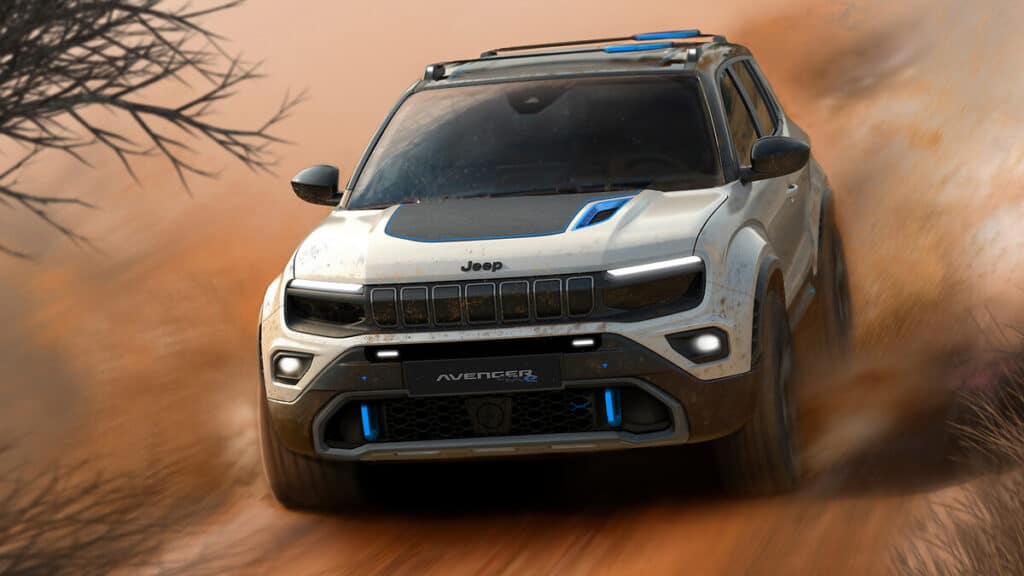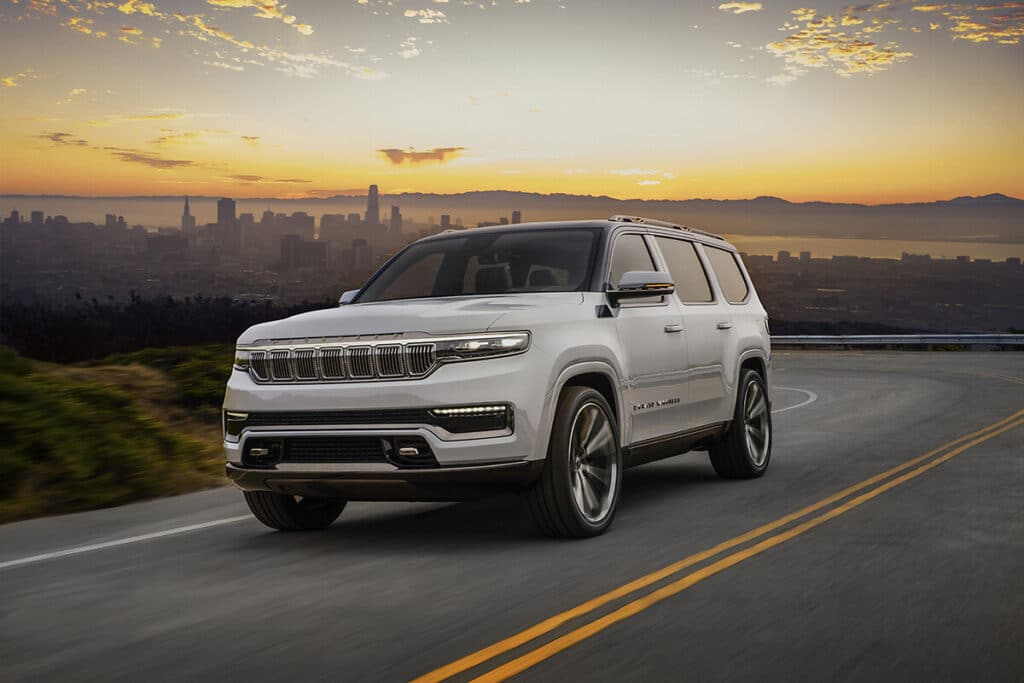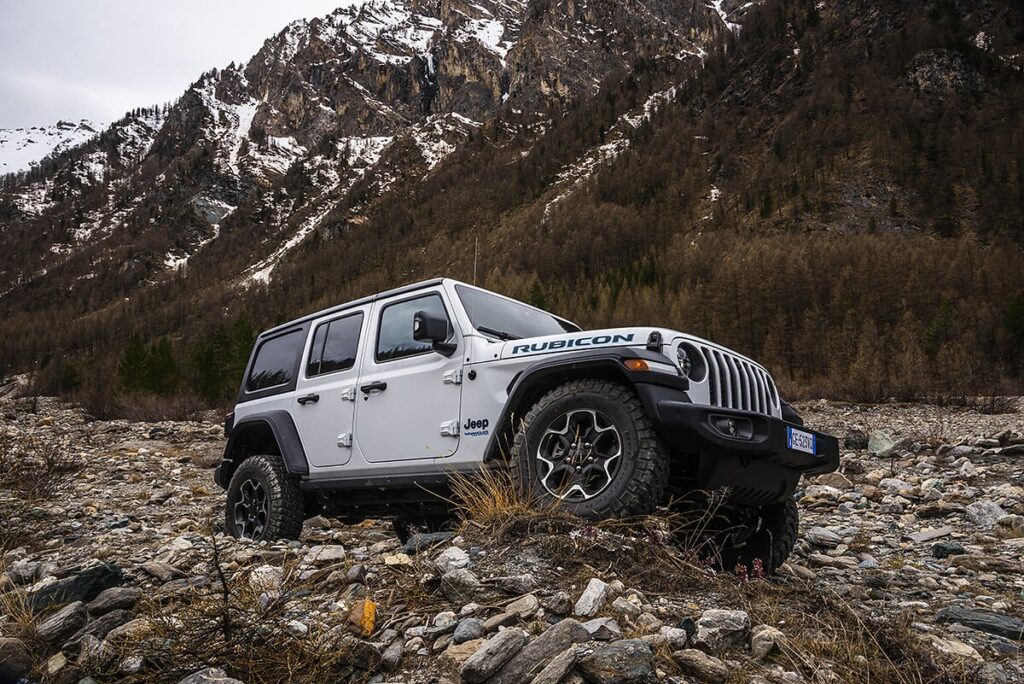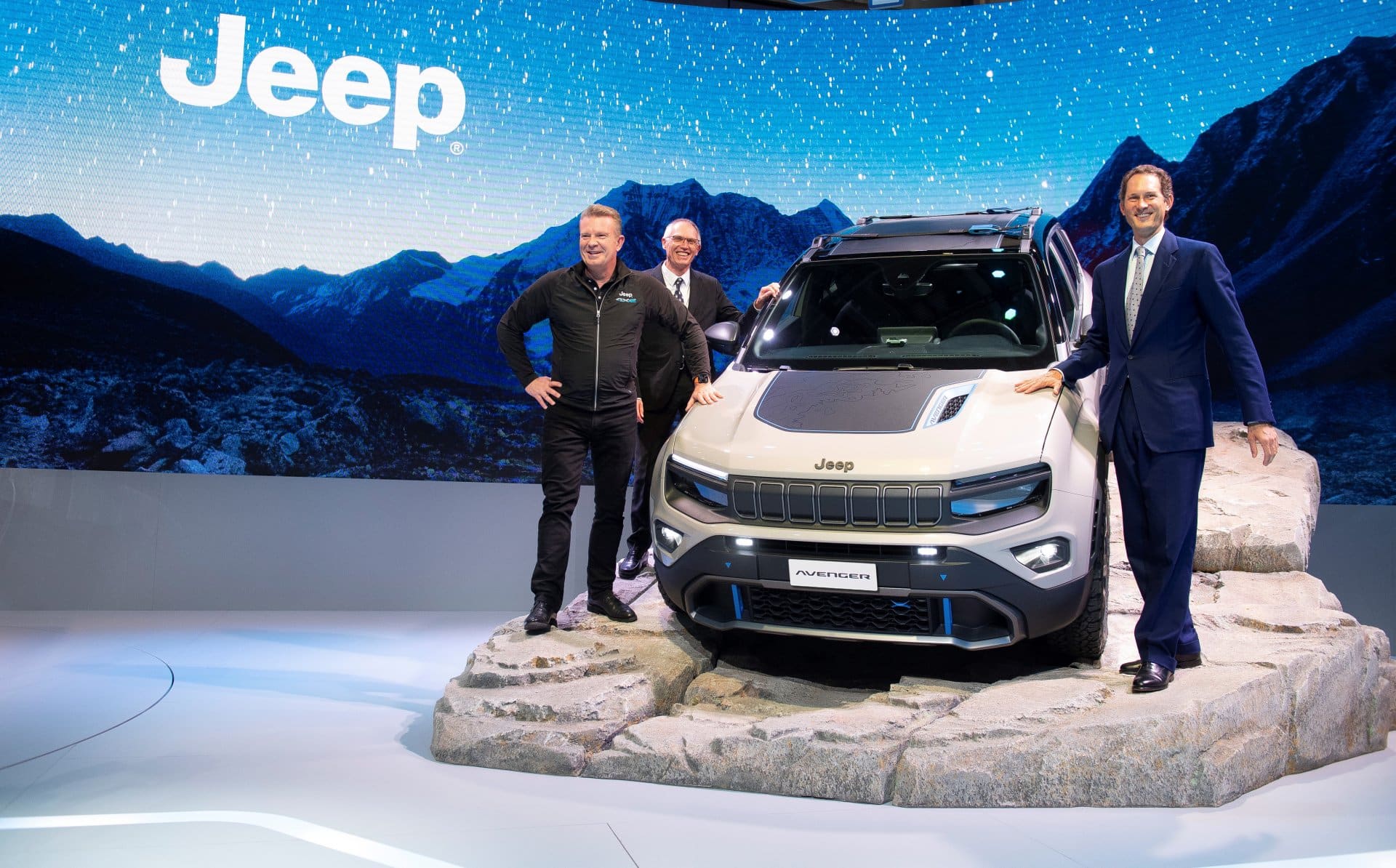Affiliate Disclosure: Automoblog and its partners may earn a commission when you use the services or tools provided on site. These commissions come to us at no additional cost to you. See our Privacy Policy to learn more.
In 2022, automaker Stellantis announced the upcoming release of three new Jeep EV models set to roll out by 2025. A press release on the company’s website said that the new fully battery-powered models are part of the Jeep’s “sustainable transformation to become the leading electrified SUV brand in the world.”
The shift toward battery-powered vehicles marks a change in focus for the iconic American brand. That new direction has been met with media enthusiasm and critical acclaim in the U.S. and abroad, but also with skepticism from some members of the Jeep community – especially off-road enthusiasts.
Jeep Is Hurtling Towards an EV Future
The introduction of three new Jeep models is a confident step toward realizing the goal of making EVs half of Stellantis’ business by 2030. But it’s not the first.
Jeep has already found considerable success in the adjacent hybrid market. In 2022, just one year after its debut, the Jeep Wrangler 4xe was the top-selling plug-in hybrid (PHEV) in the U.S. The company also introduced the Grand Cherokee 4xe, a PHEV version of its mid-size SUV, in the spring of 2022.
The Europe-Only Jeep Avenger Is the 2023 “Car of the Year”
One all-electric Jeep is already making its way to drivers in 2023 – just not in the United States. Stellantis began taking orders in Europe for the Jeep Avenger in December 2022. A little over a month later, the company announced that it had already received more than 100,000 orders for the new Jeep EV. In January, the Avenger was named the 2023 European Car of the Year by the Car of the Year Jury, which represents nine automotive publications.

The Avenger was designed in Italy and is being produced in Poland. It is powered by a 115 kW electric motor that supplies 154 hp and a range of around 250 miles. The Avenger is the first front-wheel drive Jeep to feature the automaker’s Selec-Terrain® and Hill Descent Control features.
While the car appears to be a hit with European drivers and critics alike, Stellantis currently has no plans to bring the Avenger to the U.S. market. This could be partly due to its size, which may not be as well-received in the American market. At 13.4 feet, the Avenger is now Jeep’s smallest vehicle. For reference, the length of a midsize SUV in the U.S. typically starts at over 15 feet – and the Renegade, which was previously the smallest Jeep, measures 13.8 feet long.
The Jeep Recon Is an EV Homage to the Legendary Wrangler
While the Avenger may never be seen Stateside, the Jeep Recon electric SUV is expected to be available in the U.S. in 2024. The Recon is not intended to be a replacement for the Wrangler, yet it’s apparent that Jeep drew heavily from the model’s iconic design.
The Jeep Recon features removable front doors and a power-folding rooftop, offering the open-air experience that many Wrangler fans seek. Its boxy mid-size SUV frame also evokes the Wrangler’s distinctive silhouette. The vehicle seems to promise a 4×4 experience comparable to that of the gasoline-powered classic.
Stellantis has confirmed a few of the Recon’s technical details. The off-road vehicle is built on the STLA Large platform, which is powered by a 101-118 kWh battery. This capacity is enough to give the Recon a range of just under 500 miles on a single charge. The new Jeep EV is also poised to offer some advanced features such as peer-to-peer charging.
The Wagoneer EV Is a Premium Mid-Size Battery-Powered SUV
Families and fans of large, luxurious SUVs also have a battery-powered vehicle of their own coming in 2024. The Jeep Wagoneer “S” is an electrified version of the current internal combustion engine (ICE) Wagoneer and will offer similar trim levels and space.

According to Jeep, the Wagoneer EV will have a range of around 400 miles per charge. Reports suggest that the mid-size SUV will feature a 600-horsepower motor, allowing the Wagoneer to get up to 60 miles per hour in a lightning-quick 3.5 seconds.
It’s likely that this vehicle won’t be named the Wagoneer by the time it hits the streets in 2024. In 2022, Stellantis offered a reward for the Jeep enthusiast who submitted the winning suggestion for a new name to www.namethenewwagoneer.com. The window for entries is now closed, but Jeep has yet to announce a winner.
Reaction to the Jeep EV Announcement Online Has Been Mixed
Despite the critical success of the Avenger and buzz around the North American models, not everyone is excited for the new Jeep EV lineup. In enthusiast forums such as r/Jeep and r/Wrangler on Reddit, many users have expressed reservations about the new battery-powered SUVs.
For some drivers, it’s simply about design. Many comments suggested that the new models lack the distinctive features of classic Jeeps.
Comparisons to one vehicle in particular – the relaunched Ford Bronco – are common. “Is this a Bronco Jeep or a Jeep Bronco,” said one user. “Nice Bronco,” said another. Commenters also compared the new EVs to other brands like Fiat and Kia. One simply remarked, “Looks like a Lego set.”
Not Everyone is Sold On EV Motors For 4×4 Vehicles
One of the other prevailing themes of online criticism is the use of an EV motor itself. One user simply commented, “If it was a gas engine I’d like it more.”
But while it’s tempting to chalk those comments up to stubborn old-schoolism, at least some of that sentiment is rooted in practical concerns. In early marketing for the new EVs, Jeep leaned into their off-road capability – implying that the battery-powered vehicles will offer similar performance to their ICE-powered counterparts.
Many users aren’t convinced. One concern that’s frequently shared is the fact that, while drivers of ICE-powered vehicles can carry additional fuel with them to avoid getting stranded when off-roading, that’s not possible with an EV.
“Assume that you don’t venture far from civilization or do you intend to carry spare batteries or a solar farm?” said one comment. “So what do you do, make sure you have a generator and xlarge [sic] gas can with you on trips?” asked another.
Expert Says Technology Is Jeep’s Biggest EV Obstacle
The practicality of an EV motor for off-road settings is a major hurdle for Jeep when it comes to winning over 4×4 enthusiasts, according to off-road community expert and consultant Randall Speir.
In a conversation with Automoblog, Speir said that the concerns seen online aren’t theoretical.
“Those that utilize their Jeep for extended off road trips in remote locations cannot easily use an EV at this time,” he said. “This isn’t skepticism, this is a fact. The most immediate challenge is physics. The energy density of gasoline – and diesel – is around 100 times that of lithium-ion batteries.”

That “technology gap,” as Spier refers to it, is still too wide for off-roading enthusiasts to cross. While EV range and charging has dramatically improved in recent years, he says it’s still not enough to make EVs a reliable choice for exploring remote locations. He also suggests that getting to that point comes with its own issues.
“The technology to support long range trips is not here yet,” says Spier. “The environmental implications of establishing an infrastructure for charging a vehicle along off-road routes will be an interesting challenge.”
But just because the technology and infrastructure aren’t there right now doesn’t mean that they won’t be in the future. Spier says that the potential for EVs as reliable 4×4 vehicles is there.
“As battery technology evolves to provide greater ranges of travel, this will help – if not eliminate – the need to put charging stations in the middle of nowhere,” he says. “The better efficiency of electric motors does represent a large advantage for the application of the energy. This is a big factor in the push to advance research to close the technology gap and match the performance and reliability of ICE powered vehicles.”
Will the Jeep EV Lineup Succeed?
If Jeep’s success with the Wrangler 4xe and strong early reviews for the Avenger are any indication, the company’s EV lineup is poised to perform well. And with production of the Recon set to begin in North America, the vehicle should be eligible for a federal tax credit as long as it meets current requirements concerning price and battery sourcing.
According to Spier, the introduction of the Recon and Wagoneer EVs could even help the company expand its customer base. “Jeep may actually see growth in urban markets where the EV range is acceptable and now there’s an option beyond the Prius and other unstylish egg-shaped vehicles,” he says.
But does that potential growth come at the expense of alienating the automaker’s most fervent devotees? The very real practical issues represent a major obstacle to endearing the new EV lineup to the Jeep enthusiast community. But the concerns do seem to be about identity, too – at least in part.
Jeep is an iconic automobile brand with a reputation built on rugged capability and, in the case of some models, a design that has remained relatively unchanged since the Second World War. The company’s new vehicles that aren’t yet practical for off-roading and feature streamlined, contemporary designs are, without question, a departure.
Perhaps underneath those concerns about function and form is the question of what makes a Jeep a Jeep, and whether the slick new electric models serve the same purpose – and people – as the brand has for the last several decades. For now, Spier says you likely won’t see a big shift towards EVs among the off-roading wing of the Jeep fanbase.
“Off-road enthusiasts will continue to purchase traditional ICE-powered 4×4 vehicles until they are legislated into extinction,” he says. “Or, better yet, [until] viable technologies evolve to replace ICE-powered 4×4 vehicles.”


